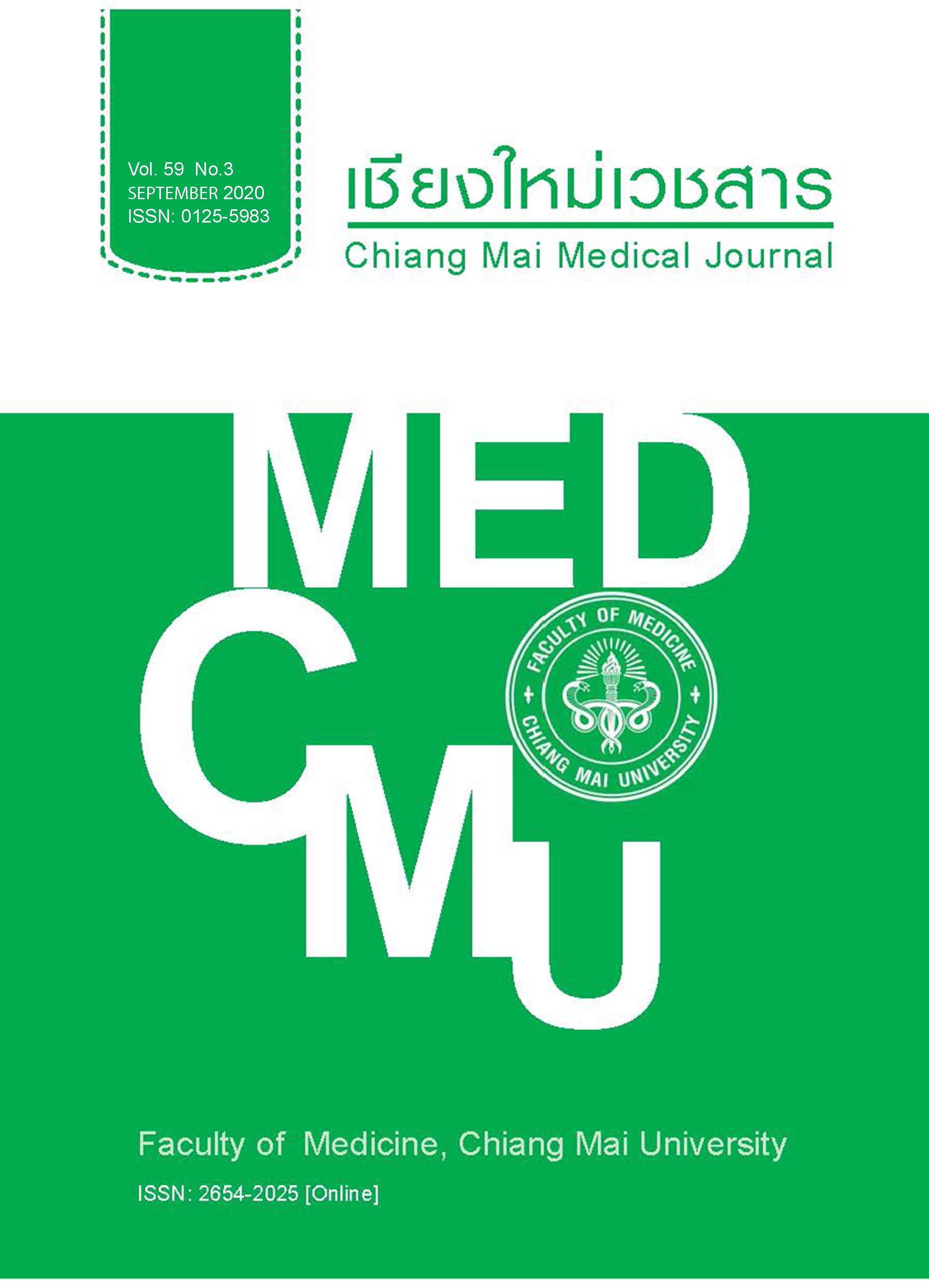Detection of Y-STR Touch DNA for Personal Identification on a Wooden Knife Handle Used as a Stabbing Weapon
Main Article Content
Abstract
Objectives The purpose of this study was to examine the effectiveness of Y-STR profiling of touch DNA from a woodenhandle knife used as a stabbing weapon.
Methods A group of 60 male volunteers were asked to stab a foam box with a wooden-handle knife held firmly in their hand. DNA from the surface of the knife handles was extracted using a Qiagen® QIAamp DNA Investigator kit and amplified using a modified Investigator® Argus Y-12 QS protocol.
Results The touch DNA profiling found that 6 of 60 of full profile samples (10%) gave a full profile and 21 samples (35%) showed useful partial profiles. No significant difference was observed between right- and left-hand dominant volunteers (p = 0.5615 95% CI = -24.6237 to 44.1160, Chi-squared test of proportion).
Conclusion Y-STR profiling of touch DNA is suitable for use in conjunction with other personal identification methods.
Article Details

This work is licensed under a Creative Commons Attribution-NonCommercial-NoDerivatives 4.0 International License.
References
van Oorschot RA, Jones MK. DNA fingerprints from fingerprints. Nature. 1997;387(6635):767.
French CE, Jensen CG, Vintiner SK, Elliot DA, McGlashan SR. A novel histological technique for dis-tinguishing between epithelial cells in forensic case-work. Forensic Sci Int. 2008;178:1-6.
Wickenheiser RA. Trace DNA: a review, discussion of theory, and application of the transfer of trace quan-tities of DNA through skin contact. J Forensic Sci. 2002;47:442-50.
Lowe A, Murray C, Whitaker J, Tully G, Gill P. The propensity of individuals to deposit DNA and secon-dary transfer of low level DNA from individuals to inert surfaces. Forensic Sci Int. 2002;129:25-34.
Meakin G, Jamieson A. DNA transfer: review and implications for casework. Forensic Sci Int Genet. 2013; 7: 434-43.
Daly DJ, Murphy C, McDermott SD. The transfer of touch DNA from hands to glass, fabric and wood. Forensic Sci Int Genet. 2012;6:41-6.
Kayser M. Forensic use of Y-chromosome DNA: a general overview. Hum Genet. 2017;136:621-35.
McDonald A, Jones E, Lewis J, O’Rourke P. Y-STR analysis of digital and/or penile penetration cases with no detected spermatozoa. Forensic Sci Int Genet. 2015; 15:84-9.
Pang BC, Cheung BK. Double swab technique for col-lecting touched evidence. Leg Med (Tokyo). 2007;9:181-4.
Farmen R, Jaghø R, Cortez P, Frøyland E. Assess-ment of individual shedder status and implication for secondary DNA transfer. Forensic Sci Int Genet Suppl Ser. 2008;1:415-7.
Ip SC, Lin SW, Lai KM. An evaluation of the per-formance of five extraction methods: Chelex® 100, QIAamp® DNA Blood Mini Kit, QIAamp® DNA Inves-tigator Kit, QIAsymphony® DNA Investigator® Kit and DNA IQ™. Sci Justice. 2015;55:200-8.
QIAamp® DNA Investigator Handbook. [cited 2017 March 6]. Available from: https://b2b.qiagen.com/us/resources/resourcedetail?id=dcc5a995-3743-4219-914d-94d6a28e49b3&lang=en
Investigator® Argus Y-12 QS Kit Handbook. [cited 2017 March 6]. Available from: http://algimed.by/download/Investigator-Argus-Y-12-QS-Handbook.pdf
Gusmão L, Butler JM, Carracedo A, Gill P, Kayser M, Mayr WR, et al. DNA Commission of the International Society of Forensic Genetics (ISFG): an update of the recommendations on the use of Y-STRs in forensic analysis. Forensic Sci Int. 2006;157:187-97.
Tsuji A, Ishiko A, Ikeda N, Yamaguchi H. Personal identification using Y-chromosomal short tandem repeats from bodily fluids mixed with semen. Am J Forensic Med Pathol. 2001;22:288-91


